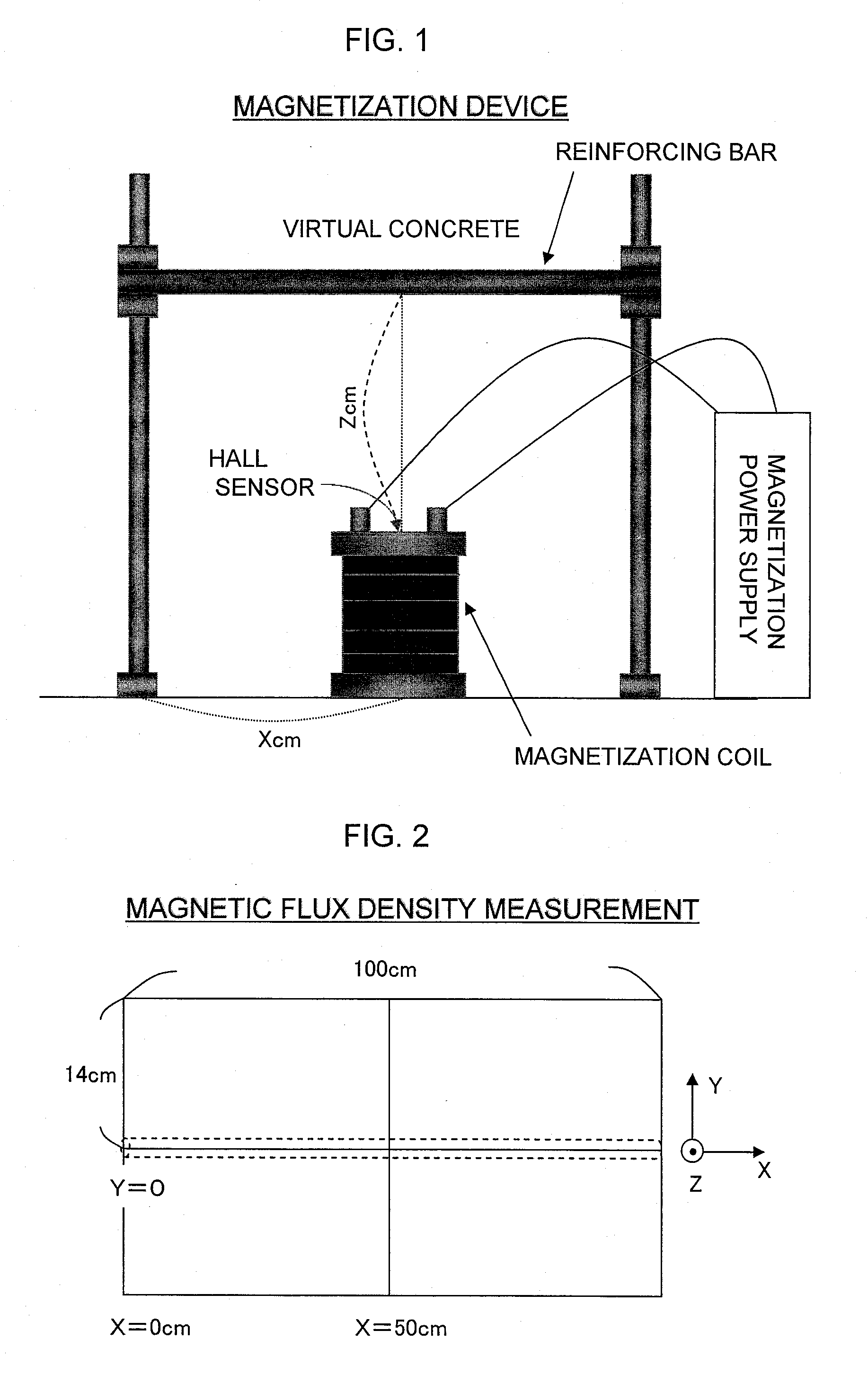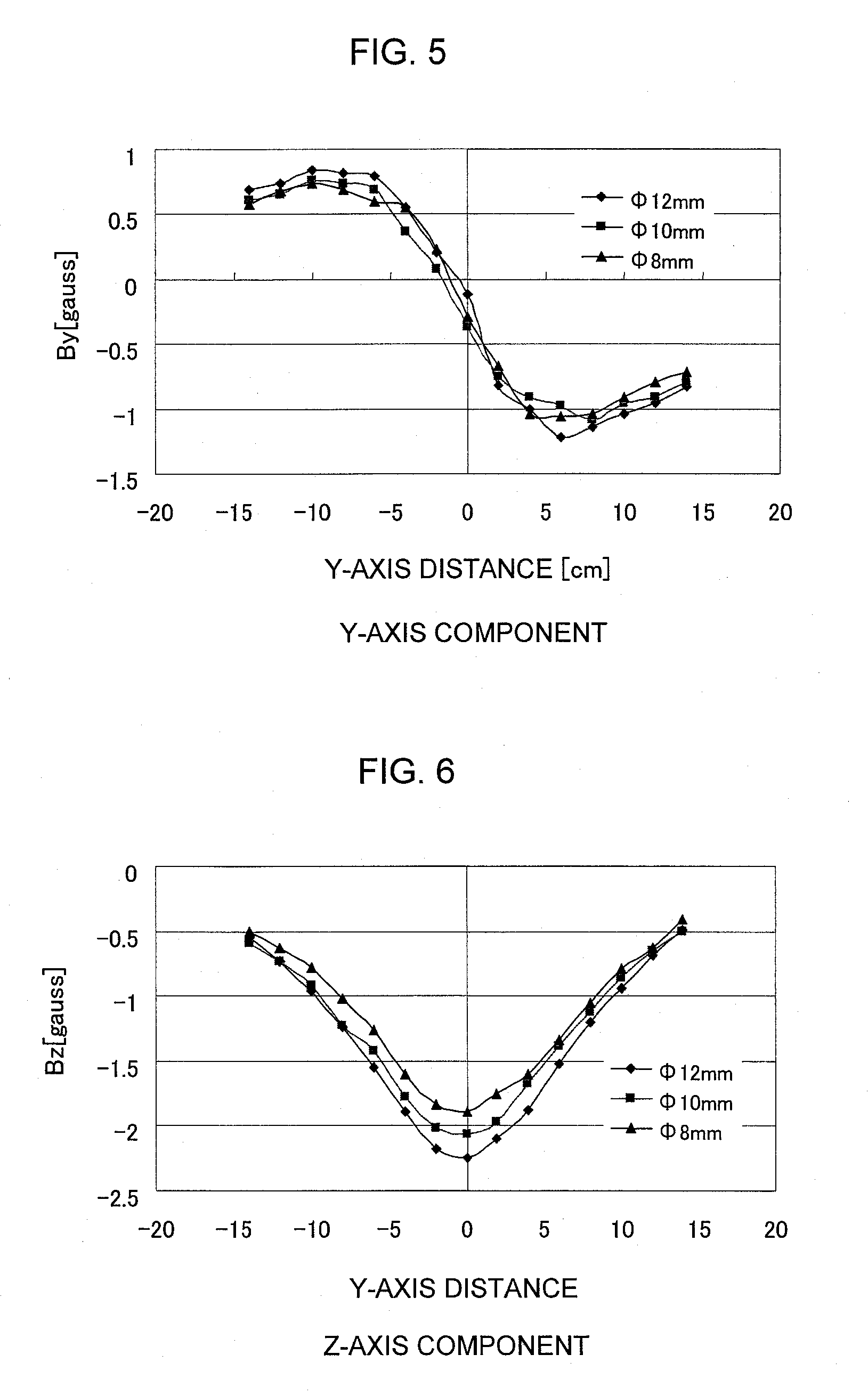Nondestructive inspection method and device
- Summary
- Abstract
- Description
- Claims
- Application Information
AI Technical Summary
Benefits of technology
Problems solved by technology
Method used
Image
Examples
example 1
[0041]An example of a magnetization power supply which may be employed in the present invention can supply a direct pulse electric current (up to 20,000 A) for magnetization. In addition, the magnetization power supply can supply an alternating current (up to 7,000 A) for demagnetizing a once-magnetized reinforcing bar so that the current is gradually reduced.
[0042]A magnetic field generated varies depending on the size of a magnetization coil employed or the number of coil turns. An example of a magnetization coil (hollow core) which may be employed in the present invention has the following specification.
[0043]Inner diameter: 30 mm, outer diameter: 118 mm, height: mm, wire diameter: 1.5 mm, number of turns: 690, coil resistance: 1.20Ω (at ambient temperature), 0.5Ω (in liquid nitrogen), and bobbin material: stainless steel.
example 2
[0044]FIGS. 5 and 6 are graphs respectively showing results of measurement of a Y-axis magnetic flux component By and a Z-axis magnetic flux component Bz performed for three different reinforcing bars having diameters of 8, 10, and 12 mm (reinforcing bar depth: 10 cm each) while changing the Y-axis distance. On the basis of these measurement data, reinforcing bar depth d can be determined by use of the formula: d=(Bz / By)·y as described above with reference to FIG. 3.
[0045]FIG. 7 is a graph showing data of determined reinforcing bar depth d. As is clear from FIG. 7, the reinforcing bar depth is almost exactly determined to be 10 cm through magnetic flux measurement (exclusive of a region in the vicinity of a Y-axis value of zero).
example 3
[0046]FIG. 8 is a graph showing data of maximum magnetic flux density as measured on three different reinforcing bars having diameters of 8, 10, and 12 mm under varied reinforcing bar depths. Maximum magnetic flux density is obtained as a Z-axis magnetic flux component (Bz) at a point in a direction perpendicular to the magnetization point (i.e., in the Z-axis direction) (see FIG. 3). In other words, the maximum magnetic flux density is obtained when the magnetic flux which emanates radially from the reinforcing bar is detected as a radial-direction magnetic flux component at a point that is located outside a concrete structure and is closest to the magnetization point of the reinforcing bar. As is clear from FIG. 8, when reinforcing bar depth is small, a large difference in maximum magnetic flux density is observed between reinforcing bars of different diameters. However, the greater the reinforcing bar depth, the smaller the difference in maximum magnetic flux density. Conceivably...
PUM
 Login to View More
Login to View More Abstract
Description
Claims
Application Information
 Login to View More
Login to View More - R&D
- Intellectual Property
- Life Sciences
- Materials
- Tech Scout
- Unparalleled Data Quality
- Higher Quality Content
- 60% Fewer Hallucinations
Browse by: Latest US Patents, China's latest patents, Technical Efficacy Thesaurus, Application Domain, Technology Topic, Popular Technical Reports.
© 2025 PatSnap. All rights reserved.Legal|Privacy policy|Modern Slavery Act Transparency Statement|Sitemap|About US| Contact US: help@patsnap.com



